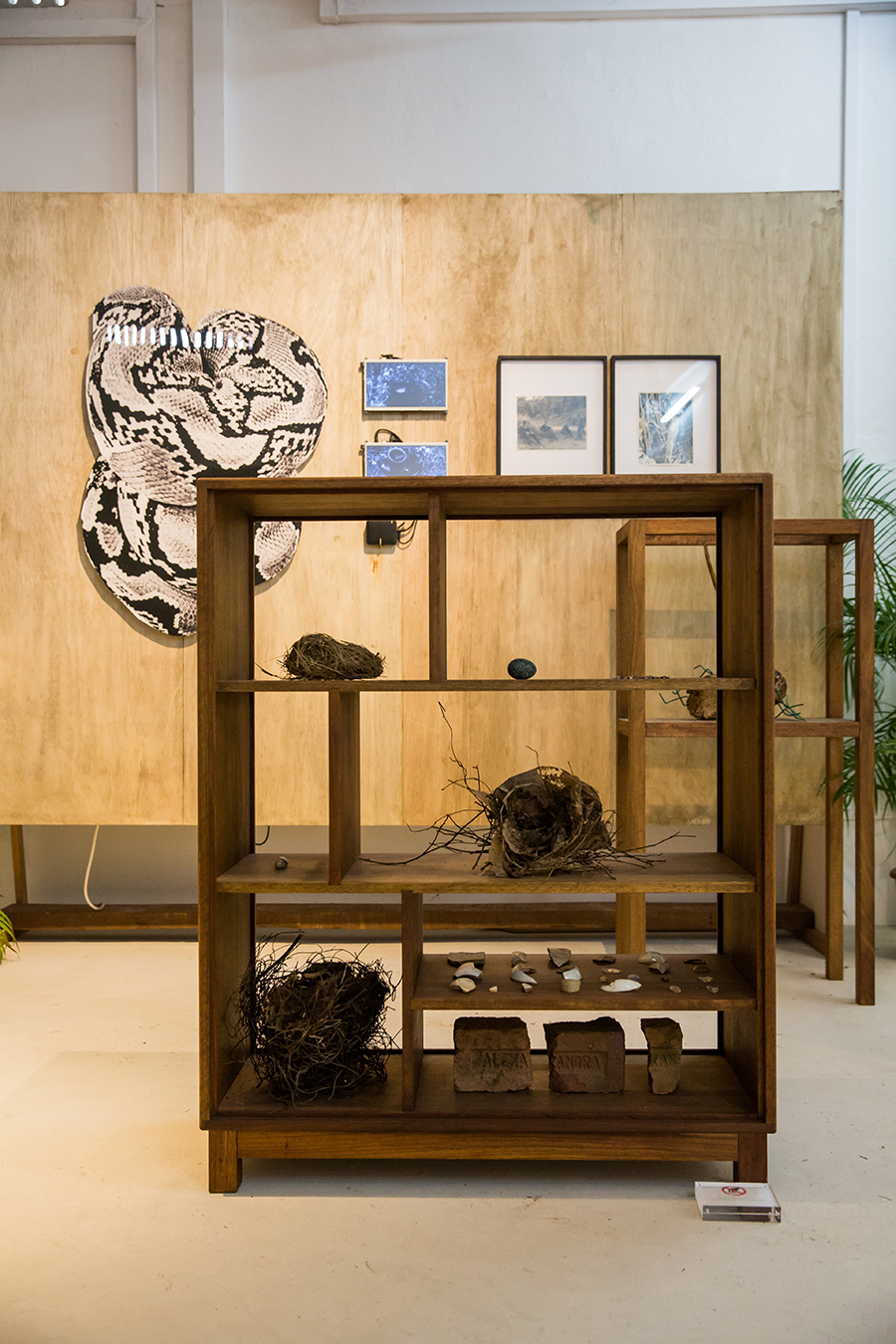Flawed but Intermittently Captivating: The Sixth Singapore Biennale
Patrick D. Flores’s southeast Asia-focused exhibition is hopeful, in spite of its sometimes academic tenor
Patrick D. Flores’s southeast Asia-focused exhibition is hopeful, in spite of its sometimes academic tenor

On 2 May 1935, the peasants of Cabuyao, a city in the Philippines, finally revolted. Incensed at American oppression, they took up arms – only to have their victory violently quashed the next day. Decades later, the female leader of the failed Sakdalista Uprising, Salud Algabre, is said to have struck a defiant tone: ‘No rebellion fails. Each step is one in the right direction’.
The soft-power juggernaut that is the sixth Singapore Biennale has brazenly retooled this revolutionary statement into a call for renewed alertness, agency and action across a broad range of contexts. Appearing on posters in blocky red font, artistic director Patrick Flores’s Algabre-inspired title, ‘Every Step in the Right Direction’, is a proposition-cum-ethical stance designed to counter the apathy of our troubled moment. More practically, it appears to also allude to the iterative nature of artistic methodology, not to mention the steps taken to assuage the pointed criticisms of previous editions: enlisting six curators, all under 40, from multidisciplinary backgrounds; engaging local communities with seven ‘Coordinates Projects’, etc.
Of the 77 participating artists and artist collectives, Amanda Heng dutifully flags the sentiment: in Every Step Counts (2019) she revisits her late 1990s ‘Lets Walk’ series with a text-based installation on the giant hoarding surrounding Singapore Art Museum, currently under renovation. Accompanied by the roar of traffic and heavy machinery, it reads like a naff self-care aphorism: One step at a time walking the way to stillness within. Over at Gillman Barracks, Nabilah Nordin’s An Obstacle in Every Direction (2019) also channels the hopeful tone with a malevolent, logic-defying obstacle course jerry-rigged out of found objects. Teetering skateboards, sloppily hung sacks of ping pong balls and paint-doused slides illustrate the high chance of failure all risk-takers face, but also signpost the thrills and spills to be had in the trying.

More plentiful than spectacularizing riffs on the title are works of an archival and research-orientated nature. For all this biennale’s populist pretensions (‘a cross between a seminar and a festival, an archive and a workshop’, boasts the catalogue) its default tenor is unapologetically academic, I find – sometimes to its detriment. At the National Gallery, for instance, is a survey of 14 works spanning 1967–2006 by the late San Francisco-based Filipino-American artist Carlos Villa. One of Flore’s vaunted steps is inscribing the global in the region, remapping Southeast Asia along geopoetic lines, resisting the borders drawn by colonialism and Cold War politics. But while this statement-making excavation of a rich and singular practice – think paintings and cloaks richly embellished with feathers and spiral motifs – helps achieve that, why so much of it belongs here is never clearly explained.
Contrasting with such loose frames of art-historical reference are 50 new commissions. Among many strong works, Titre Provisoire’s ensemble video Between spins, stops and change of directions (2019) is a favourite. Six characters explore attitudes surrounding German colonialism in Southeast Asia by spewing acerbic non-sequiturs to each other in Singapore streets, forests and apartments, to riveting effect.
Elsewhere, Robert Zhao Renhui’s cabinet of salvaged curiosities and camera-trap footage (Queen’s Own Hill and Its Environs, 2019) beckons us into the forgotten woods behind Gillman Barracks. It is joined, in Building 22 of the former British Army barracks, by Dusadee Huntrakul’s goofy reproductions of Bronze Age pottery, Zakaria Omar’s sculptures made from reclaimed stilt house pillars and Ruangsak Anuwatwimon’s reconstructions of critically endangered local trees. Together, they create a broad, material-led meditation on natural history and the nature of history – and a rare moment of cohesion. And at Lasalle College of the Arts, a cacophonous yet enjoyable suite of films and archival projects peaks with the stirringly simple Aesthetics 101 (2019). Prapat Jiwarangsan’s nine-channel projector installation plays slides once belonging to the late Thai art historian Somkiat Tangnamo, the scattershot pulsing images drawn from East and West, ancient and modern art history creating a hypnotic, pedagogic tone poem.

On the last of my two days spent exploring the biennale’s 11 civic sites, its hermetic seal was broken, and the real world rushed in. Within seconds of leaving the National Gallery, I found myself gingerly stepping around a picnicking crowd of thanaka-daubed migrants from Myanmar. On Sundays, they gather beneath a covered walkway in the hundreds to make calls to relatives, eat food and enjoy a few hours of togetherness on their day off. Suddenly, I was aware of a disconnect: Where do they, Singapore’s underclass, fit within the clubby rhetorical framework of Flores’ sanguine ‘sensorium’? Looking through the catalogue, with all its talk of collective assembly, grassroots collaborations and broadening spheres, I began to question the efficacy of some of the curatorial directions taken. And I decided that Flores would probably approve: as well as calling for thoughtful exploration, this flawed yet intermittently captivating biennale courts fallibility, pivots upon the notion that there will always be a next step to take and a great distance still to travel.
‘Singapore Biennale 2019’ runs at various venues between 22 November until 22 March 2020.
Main Image: Nabilah Nordin, An Obstacle in Every Direction, 2019, multi-media installation, dimensions variable. Courtesy: the artist and Singapore Art Museum
























